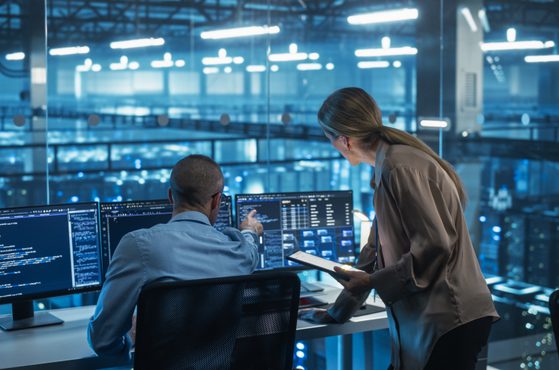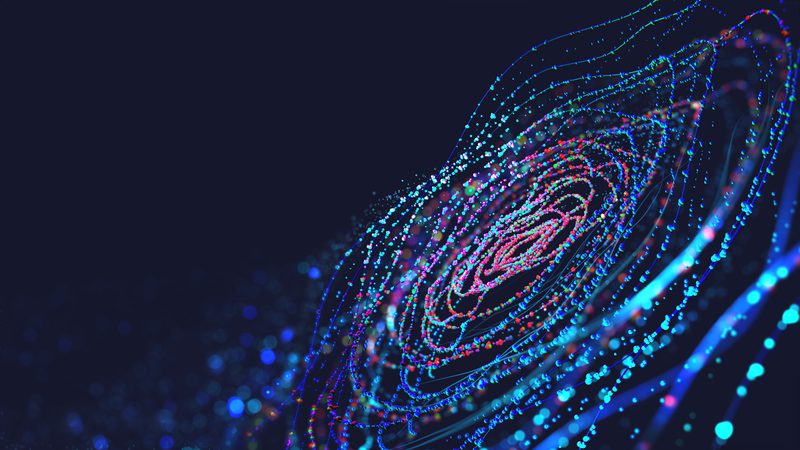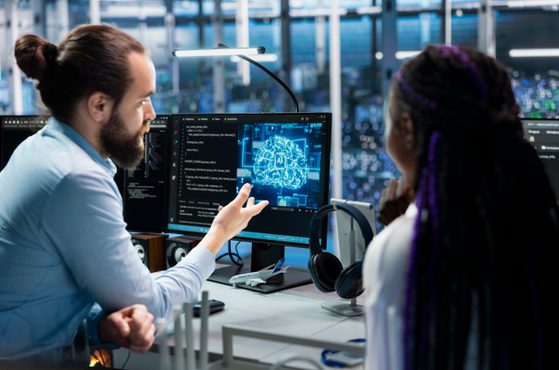Is your AI patentable? Lessons from the Court of Appeal’s landmark ruling

We explore the key issues from the case and consider the practical implications for those operating in the tech, creative and data-driven sectors.
Read more
We make the difference. Talk to us: 0333 004 4488 | hello@brabners.com
AuthorsMaya TajuddinColin BellSara Ludlam

As generative artificial intelligence (AI) continues to evolve, concerns around copyright and trade mark infringement have intensified — with cases like Getty Images (Getty) v Stability AI bringing these issues into sharp focus.
The ability of AI models to learn from existing content and produce outputs that closely resemble protected works is raising complex questions about intellectual property (IP) while also heightening tensions between rights holders and AI developers.
Here, Maya Tajuddin, Colin Bell and Sara Ludlam explore the potential impact of AI on existing copyright laws and delve into the other IP and cross-border issues that arise from the use of global AI tools.
The UK’s Copyright, Designs and Patents Act 1988 (CDPA) protects against the unauthorised reproduction, distribution and adaptation of works. The rise of generative AI has prompted pressing questions — for instance, is using copyrighted material to train AI models a form of infringement? Some argue ‘yes’ under the current law while others believe that exemptions apply and the Government should consider introducing a specific one for such use. Since AI systems are trained on vast datasets of existing content, the question remains — what materials can they legally use?
AI providers argue that their models and tools shouldn’t be considered as constituting copyright infringement but rather a ‘fair use’ of the materials. Copyright laws do offer exemptions — in particular for non-commercial research, parody, caricature and pastiche — provided that there’s sufficient acknowledgment and fair dealing. eCommerce exceptions also exist for caching and hosting copyright works. However, it’s debatable as to whether these apply to generative AI systems using third party materials without authority or whether a new law is required.
In the UK, the leading case on this issue of IP and training AI is Getty Images (US) Inc and Others v Stability AI, a dispute that is emblematic of the particular challenges facing individuals, creators, developers and regulators.
Getty is a global visual media company and licensor of stock images. Stability AI is a London-based developer of generative AI tools including ‘Stable Diffusion’ which generates images from text prompts.
On 15 January 2023, Getty initiated proceedings against Stability AI in the English courts, alleging that Stable Diffusion had been trained on up to seven million of their copyright works — including images, videos and illustrations — without permission.
Getty’s copyright claims fall into two categories:
Getty also argued that its significant investment in curating its image collection gives rise to database rights which Stability AI infringed by extracting or reusing a substantial part of that content.
In addition, Getty claimed that the appearance of its watermark in some images generated by Stable Diffusion without consent amounts to trade mark infringement and passing-off by falsely suggesting that those outputs are owned, licensed or otherwise connected to Getty.
Stability AI responded with several arguments:
During the trial, Getty dropped its primary copyright and database infringement claims. This suggests that it may have struggled to prove that the main infringing acts occurred within UK jurisdiction. Issues included gaps in the evidence, a lack of witnesses with direct knowledge of Stable Diffusion’s training processes and an inability to link this activity to the UK territory.
Jurisdiction will likely remain a key issue in future cases since AI training and data mining often span multiple regions. Whether or not it constitutes an infringement in the UK remains undetermined by the courts and AI developers may seek to avoid the issue in the UK by training their models elsewhere.
As a result, the court will now focus on the secondary copyright infringement claim along with the trade mark infringement and passing-off claims. This narrowing of the case underscores a broader issue — applying traditional IP laws and licensing schemes to modern AI technologies.
The outcome — expected in autumn or winter 2025 — is still likely to have a significant impact on AI tools and their use in the UK. It may also indirectly impact the Government by either affirming the viability of copyright claims by rights holders against AI developers or preclude similar actions from going forward, giving rise to legislative changes. In fact, change may already be on the horizon as the UK’s Intellectual Property Office launched a consultation on reforming UK copyright law in light of advancements in AI.
Governments worldwide are grappling with how to regulate AI while safeguarding IP and copyright protections:
These frameworks reflect a more global tension — how to balance and reconcile innovation and the use of AI systems with the rights of creators.
While the UK currently relies on non-statutory AI principles and GDPR compliance, new legislation is anticipated. The Government's AI policy hub outlines voluntary frameworks and risk-based guidance for developers, though it remains tricky to navigate this delicate legal landscape.
While the UK had previously favoured the creation of an exemption for copyright infringement, that idea received strong pushback from the creative industries which argued that it would undermine their protections under the CDPA. The Government may shift direction but has expressed that it’s still committed to a pro-innovation approach, preferring the development of technology and AI tools. That said, a lighter touch now seems more likely.
One of the key questions is whether AI systems constitute ‘fair dealing’ in accordance with the CDPA. An AI exception is highly contested and some argue that this would unfairly remove a revenue stream to copyright holders.
On one hand, an entrenched copyright infringement exemption would be beneficial for AI providers. On the other, creative industries and copyright owners may prefer a licensing or fee-based system where AI providers could be allowed to use copyright works subject to a monetary agreement. Philip Pullman is the latest to call for authors to be compensated and recognised for any use of copyright works to train AI software.
While legal frameworks in the UK and elsewhere remain unsettled, there’s growing support for either opt-out exemptions or opt-in licensing (in exchange for fees) models which would allow AI developers to use copyright materials. However, implementing these models poses significant challenges, particularly around fee structures and enforcement.
A key case in the US, Bartz v Anthropic, looked at whether training AI models with copyrighted material might constitute transformative ‘fair use’. At first instance, US District Judge William Alsup ruled that Anthropic’s use of protected material to train its AI system, Claude, was fair use. However, the company still faced trial over piracy since it had downloaded pirated copies of the works. This case has now settled with Anthropic agreeing to pay $1.5bn to Bartz in September 2025.
Recent litigation shows that the correct balance needs to be struck. AI developers need to ensure that their training datasets don’t infringe third-party rights and should consider auditing and tracking their data — though this may affect eCommerce defences. On the other hand, it’s positive that such cases empower copyright owners to assert claims over the unauthorised use of their content.
In October 2025, OpenAI announced its move to an opt-in model for video AI tool, Sora, requiring permission before copyrighted characters and images can appear.
As the industry evolves, more consideration will need to be given to a formal licensing process and how this may apply in an AI-driven world.
As the legal and regulatory landscape surrounding AI continues to evolve, it’s essential for stakeholders to remain vigilant and proactive in navigating the complex intersection of IP, copyright, data use and AI development.
We have extensive expertise in IP, technology and AI and can assist clients with the following issues:
Talk to us by calling 0333 004 4488, emailing hello@brabners.com or completing our contact form below.

Sara Ludlam
Sara is a Partner and Chartered Trade Mark Attorney in our commercial and intellectual property (IP) team.
Read more

Loading form...

We explore the key issues from the case and consider the practical implications for those operating in the tech, creative and data-driven sectors.
Read more

We explore the potential of AI Growth Zones to transform the region through investment and job creation while also highlighting ongoing environmental concerns.
Read more

We break down the key takeaways from the final ruling and consider what they mean for the evolving relationship between IP law and AI development.
Read more